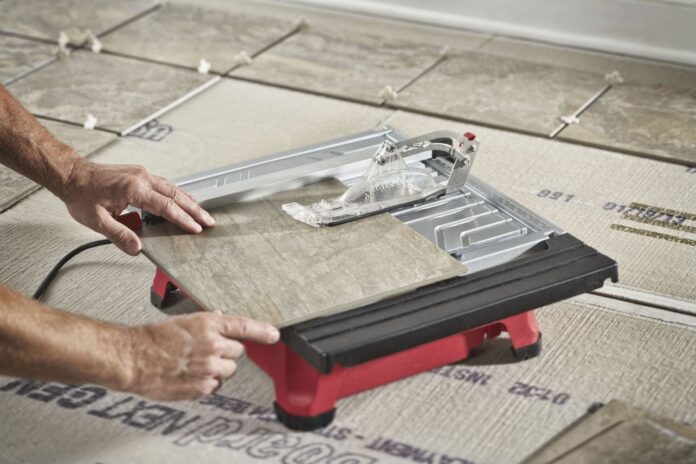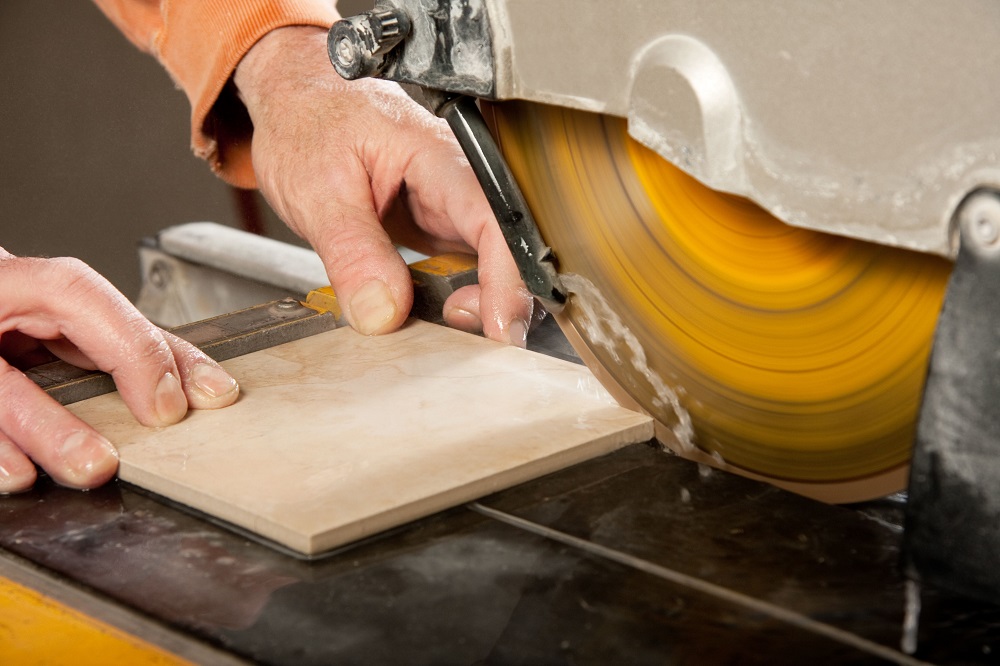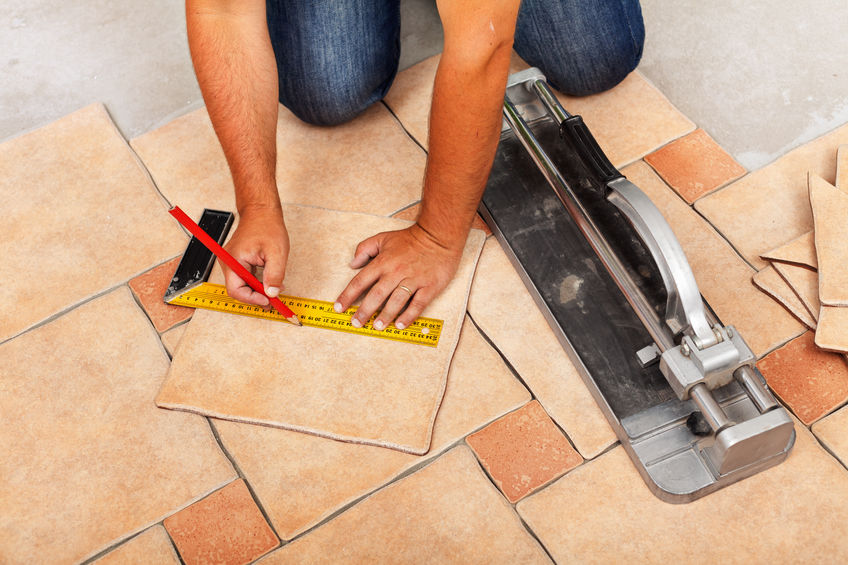Tile is a universal finishing material that offers a long list of benefits for various indoor and outdoor projects. Still, the high durability of tile requires a hefty amount of raw power when it comes to cutting tiles into custom-sized pieces. That’s where you can’t go without an appropriate tile cutting tool. Read this comprehensive guide to learn what types of tile cutters there are on the market and what tile types they can help you deal with.
Tile Cutters vs. Tile Saws
Tile cutters and tile saws are the two main types of tile cutting tools. Review the main differences between the two below.
Tile cutters:
- are manually operated;
- don’t require a power source;
- use aligned pressure on the tile to break it into pieces with straight edges;
- usually cost less than electric-powered tile saws;
- provide high-precision for small projects and high-quality cuts on delicate materials like porcelain;
- are great for small projects, thin tiles, but are not suitable for processing thick heavy tiles for larger projects.
- work great when you need to make long accurate cuts on large-surfaced tiles, which are so popular today.
Tile saws:
- are motorized to minimize the manual force needed for cutting;
- use diamond blades for cutting thicker tile types, including marble, stone, and granite;
- work great for large residential projects and commercial applications;
- are preferred for large batches of tile.
Tile Saw Types & Their Differences
Electric tile saws are available in 5 types and different sizes for specific applications. Let’s review them all.
- Handheld tile saw – available for both dry and wet cutting processes, handheld tile saws are the most affordable and portable amongst motorized tile cutters. At the same time, they are indispensable when it comes to curved cuts and cutting large slabs that can’t be loaded on a table tile saw. On the negative side, it’s very hard to make a straight cut with this tool unless you have a special guide rail or jig. It’s also not recommended for novice users due to the high kickback rate.
- Fixed tile saw (tabletop sliding tile saw) – fixed wet tile saw looks like a classic table saw for woodworking and requires you to push a tile through the fixed blade. It’s a lightweight, easy-to-use, and relatively affordable tile cutter that also features a water tank for wet cutting. It’s generally a beginner-friendly tool, but you will need some practice to “feel” how to make a perfectly straight cut.
- Table saw with a rolling tray – this type looks very similar to a fixed tile saw but features a rolling tray that expands the working surface of the tool and lets you move the tile through the blade perfectly straight without any practice. It also lets you cut larger tiles.
- Sliding table tile saw – this tile saw features a blade mounted above the working surface, similar to a miter saw. Due to this, you can adjust the depth of the cut, make plunge cuts, and even beveled cuts. The sliding table makes it easy to batch a large number of tiles at a quicker rate than other tools.
- Bridge tile saw (overhead tile saw) – this one features a large moving overhead blade that makes cutting large and thick tiles a lot easier. Still, it’s mainly for large commercial outdoor projects.
Push Tile Cutters vs. Pull Tile Cutters
As you already know, tile cutters are great for small projects as well as for cutting large-surfaced tiles. Now you need to learn the differences between the two types of tile cutters.
Push tile cutters:
- are easy on your wrist, and allow fluid linear arm movement with efficient incision power management;
- feel most convenient when you need to cut large tiles, but the measurement square is located quite far from you.
Pull tile cutters:
- feature an easy-to-reach measurement square;
- allow you to stabilize the tiles with your knee while cutting;
- allow fluid linear arm movement but require more time to master proper technique;
- make it quite difficult for beginners to apply the right amount of pressure.
Due to such slight differences, it can be quite hard to decide which cutter type is the best for you. It’s recommended to choose push tile cutters if you are not a professional or like the ergonomics of the type more. Pull tile cutters are usually preferred for large tile cutting and small-scale residential commercial applications.
Clear Now
Now you can choose the most effective tile cutter for your upcoming project. You can either get a universal tool if you are a professional contractor or opt for a one-off affordable solution for a small reno project. Besides, you can rent any of the available options to save up.




















